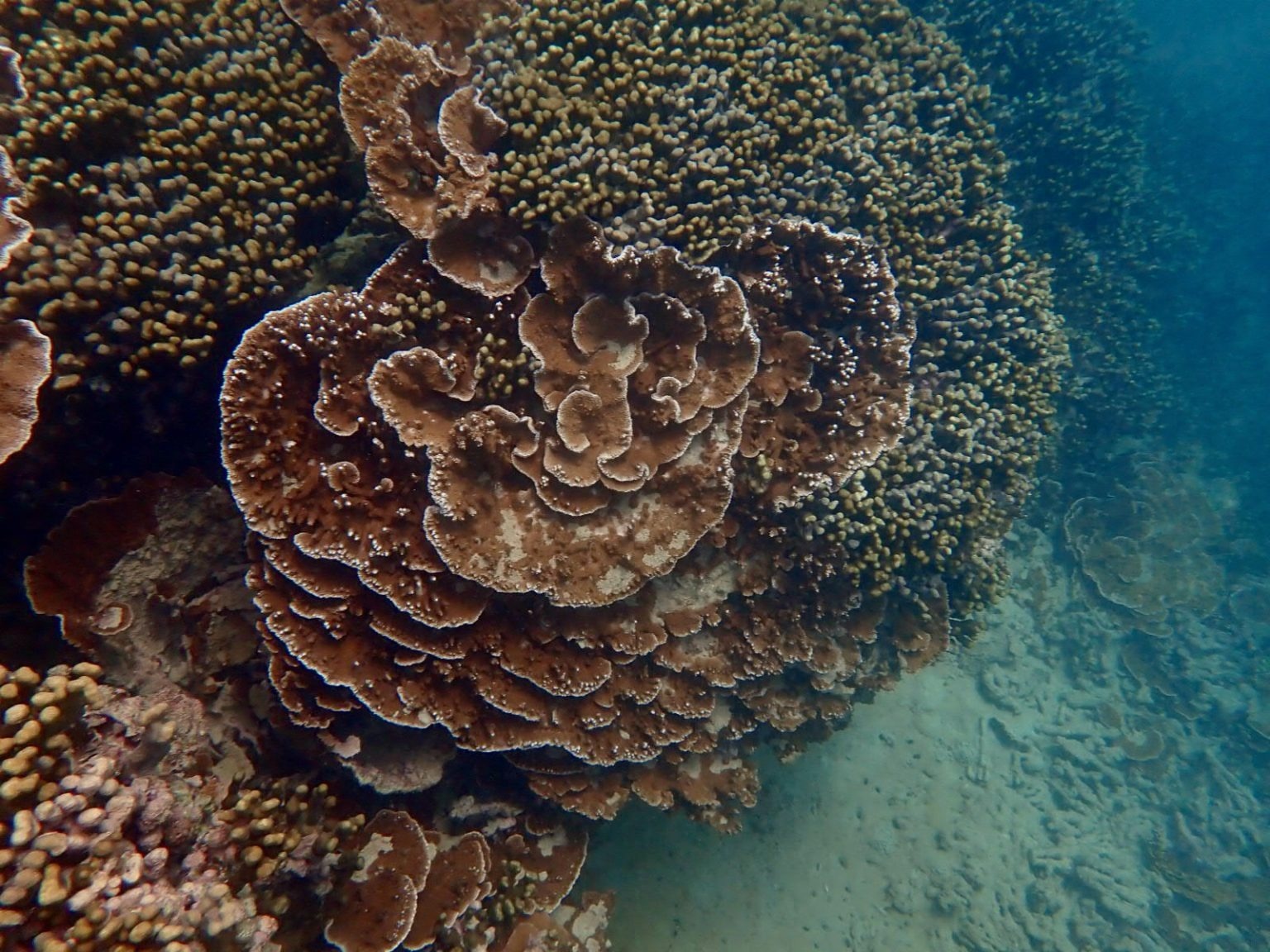Reviewed by Alex SmithOct 5 2022
Corals cohabit with a multitude of microscopic algae, which supply the majority of the energy required by corals, and some algae can make corals more resistant to heat stress.
 Montipora capitata (the coral used in the study), in Kaneohe Bay. Image Credit: Mariana Rocha de Souza.
Montipora capitata (the coral used in the study), in Kaneohe Bay. Image Credit: Mariana Rocha de Souza.
Scientists from the University of Hawai‘i at Mānoa, while analyzing one of the major reef builders in Hawai‘i, Montipora capitata or rice coral, discovered that the symbiont community in those corals differed significantly in distinct parts of Kaneohe Bay.
Investigators tagged and gathered 600 rice coral colonies around Kāne‘ohe Bay, off the windward side of O‘ahu, Hawai‘i. They discovered the algal symbionts in the colonies and gathered environmental data from each region of the bay, including temperature and sedimentation. The research was published in the journal Royal Society Open Science.
Although researchers have understood that corals have a wide range of symbionts, it is unknown if the algae species change from one area to another and what drives those changes.
The two most prevalent algae genera harbored by corals in the Pacific Ocean are Cladocopium and Durusdinium. Cladocopium is widespread, whereas Durusdinium is typically found in shallow corals exposed to high light or sea surface temperature or in places with considerable temperature variability and is linked to increased thermal stress resilience.
Coral in the extreme north and extreme south of Kāne‘ohe Bay hosted less of the stress resilient symbiont. This makes sense, as these areas experience less light, less warming and less temperature variation. However, we were surprised to see that the symbiont really responded to these fine environmental differences in parts of the bay—something that had not been found in other studies.
Mariana Rocha de Souza, Study Lead Author, University of Hawai‘i at Mānoa
Mariana Rocha de Souza was a graduate student at UH Mānoa’s Hawai‘i Institute of Marine Biology during the time of the research.
Thermal stress is the most significant threat to corals globally. During the past century, sea temperatures in so many tropical regions have risen by over one degree Celsius and are still rising.
Our fine-scale sampling of coral colonies across a relatively small spatial gradient (~10 km) within Kāne‘ohe Bay showed that algal symbiont community structure can respond to the conditions under which the coral is living. This sets the stage for understanding the role of environmental conditions in shaping how algal communities are distributed in space and time.
Mariana Rocha de Souza, Study Lead Author, University of Hawai‘i at Mānoa
Healthy coral reefs are among the world’s most biologically diverse and economically valuable ecosystems. However, climate change has had an impact on corals in Hawai‘i and around the world, causing coral bleaching and possibly coral death.
Understanding the symbionts present in corals in Hawai‘i and what is driving the symbiont community composition can help us predict how these corals will respond to future heat stress.
Mariana Rocha de Souza, Study Lead Author, University of Hawai‘i at Mānoa
The investigators re-sampled these corals during the 2019 bleaching event in Kāne‘ohe Bay, and are now evaluating the data. Their next step will be to look into how corals with different symbionts from different regions of the bay reacted to the bleaching event.
Journal Reference:
de Souza, M. R., et al. (2022) Community composition of coral-associated Symbiodiniaceae differs across fine-scale environmental gradients in Kāne‘ohe Bay. Royal Society Open Science. doi.org/10.1098/rsos.212042.